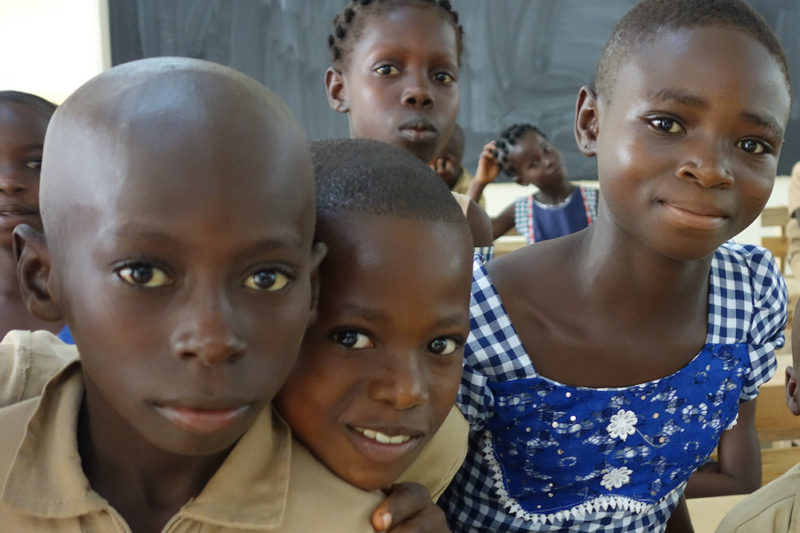International Cocoa Initiative report highlights need for urgent joint action

The International Cocoa Initiative (ICI) is marking World Day Against Child Labour today (12 June), in releasing its 2019 annual report highlighting progress made and urgent combined sector measures required to tackle what remains a major industry issue.
As the study notes, with such a complex matter, learning from experience, exploring new approaches and adapting to changing circumstances is essential to delivering impact for farming families.
With the cocoa sector now threatened by the social and economic impacts of the Covid-19 pandemic, it is more urgent than ever. ICI’s annual report highlights the activities that have allowed the organisation to directly benefit over 380,000 children since 2015 and calls for those activities to be scaled up across the sector to protect even more children.
ICI’s 2019 annual report explores in detail two pillars of our work to tackle child labour in cocoa: the promotion of responsible supply chain management through Child Labour Monitoring and Remediation Systems (CLMRS) and the tackling of root causes through community development.
As outlined in the Swiss-based foundation’s report, the CLMRS, implemented with ICI’s partners, has positively impacted over 215,000 children in cocoa-growing communities in Cote d’Ivoire and Ghana since 2015. The systems, embedded in cocoa supply chains and in collaboration with local actors and cocoa cooperatives, work to monitor, identify, prevent and remediate child labour cases, particularly helping companies conduct effective human rights due diligence in relation to child labour.
Last year over 160,000 farmers were targeted by the CLMRS. In addition 41,305 child labour awareness raising sessions were carried out within cocoa farming households and communities, 4,110 community members took part in income-generating activities, and 213 Community Service Groups were trained and equipped, supporting a reduction in child labour by providing farmers with affordable labour. These systems have proven effective at identifying and remediating child labour, with the potential to reduce child labour by up to 50% among supported children.
Community development, the second pillar of ICI’s work, has also proven to be highly effective. In 2019, a preliminary analysis of ICI’s Community Development Programme carried out between 2015 and 2018, shows a reduction of hazardous child labour of between 20-30% in communities in Ghana and Ivory Coast.
Meanwhile, results from the four-year Eliminating Child Labor in Cocoa (ECLIC) project, which ended last year and was funded by the United States Department of Labor, underline the potential benefits for children of sustained community development, with hazardous child labour falling by 37% among supported households in 50 communities.
Learning and innovation are also now at the heart of ICI’s strategy and, in 2019, ICI’s learning agenda advanced both knowledge and capacity in the cocoa sector. The publication of research into the link between poor quality education and child labour has shed light on the importance of going beyond the simple issue of access to schooling.
And research into child labour risks at the community level led to the development of a practical new tool, the Child Labour Risk Calculator, to support actors in the cocoa sector simplify the process of targeting development assistance to those communities most in need. Further innovation projects are ongoing to estimate child labour risk at the household level which will then be integrated into existing monitoring systems to drive efficiency. ICI is also working to better respond to the risk of forced labour through a pilot project launched last year in Ghana that aims to help companies and other actors understand, prevent and mitigate forced labour where risks are most pronounced.
“Now more than ever, we need to advance our thinking, drive innovation, adapt our tools and build capacities. When the resilience and livelihoods of cocoa communities are increasingly threatened, and when these pressures are expected in turn to increase the risks to children, we need to capitalise on the positive results we’ve achieved and double down on our efforts to take them to scale” said Nick Weatherill, ICI’s executive director.
“The impacts we’ve shown from our CLMRS and community development work are highly encouraging, and so too is the growing commitment from all actors in the sector. It’s now imperative that we all unite behind a common purpose of reaching every child at-risk, and building systems in the supply-chain, through national services and in communities that protect them.”
With the end of ICI’s 2015-2020 strategy in sight, a new strategy is being developed that will place even greater emphasis on this imperative of scaling up impact. Visit ICI’s 2019 online Annual Report here.
